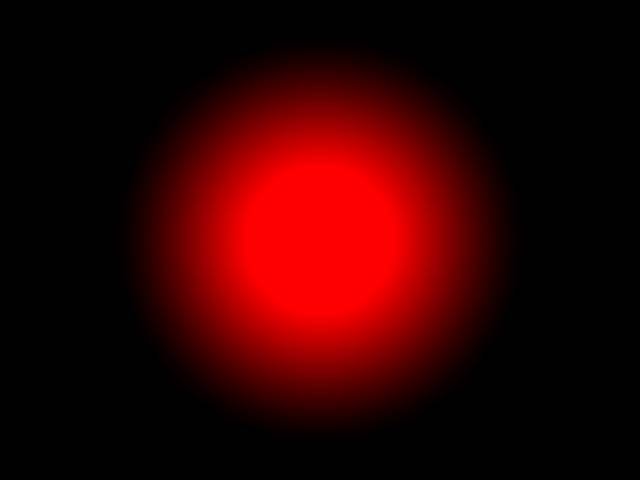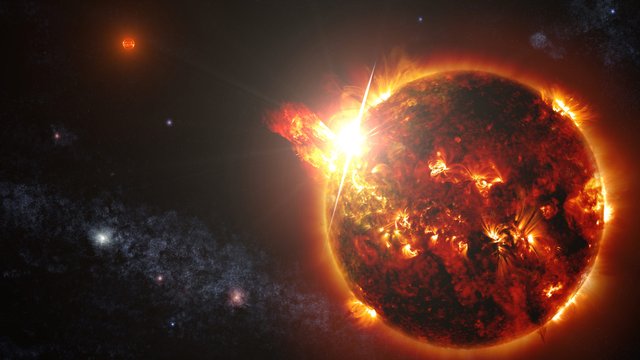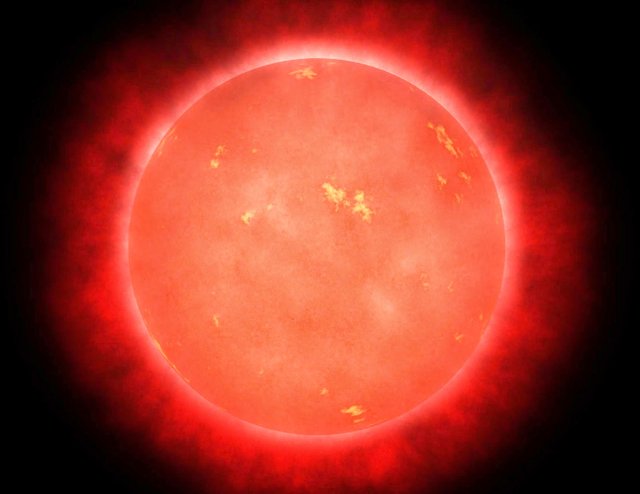The red dwarfs
Surrounded by them
Of the 30 stars closest to Earth, 20 are red dwarfs. However, none is visible to the naked eye, not even Proxima Centauri, which is the nearest star, only 4.24 light-years away from the Sun. They are so numerous that they represent approximately 70% of all stars in the Milky Way and, in addition, they represent a similar proportion throughout the observable universe.
However, despite this abundance, the term red dwarf does not refer to a single type of star. We usually use it to refer to colder objects, including K-type and M-type dwarfs, which are stars, and brown dwarfs (which some call failed stars because they have not accumulated enough mass to maintain hydrogen fusion in their nuclei).

source picture
Formation and characteristics
Red dwarfs form like any other star. A cloud of gas and dust accumulates from the action of gravity and begins to rotate. At a given moment, the material that composes it begins to clump together in the centre and, when the pressure causes it to reach the critical temperature, the fusion of hydrogen from the material in the nebula in which the star has formed begins (a nebula can give rise to many stars).
But red dwarfs include only the smallest stars, those that have between 7.5 and 50% of the mass of our Sun. This small size means that its effective temperature is lower, reaching only 3,500ºC, compared to the 5,500ºC it reaches in the Sun. They are much dimmer and colder stars than the others.
That low temperature works in their favor because it also means they burn the accumulated hydrogen at a much slower rate. The most massive stars are only able to consume the hydrogen in their nucleus before the end of their lives, while red dwarfs consume all the hydrogen they have accumulated, both inside and outside their nucleus. This causes them to have a much, much longer estimated life. Some are estimated to take billions of years to spend their hydrogen, far longer than the 10 billion years it normally takes for a star similar to the Sun.
Sometimes the term red dwarf is also used to refer to a brown dwarf, but it should be remembered that they are not stars. Although it is believed that the process by which they are formed is exactly the same, with the only difference being that they never reach the melting point because they are too small. Some scientists avoid using it to refer to brown dwarfs and others do not (in Astrobitácora I never use the term for brown dwarfs, by the way).

source picture
The classification of red dwarfs
Because they are so extremely faint, the classification of these cold stars can be quite complicated when they are first discovered. For example, when measuring the atmosphere of such a new object, it is not clear whether it is a brown dwarf or a red dwarf. Newly formed brown dwarfs look very similar to colder red dwarfs (which we call ultra-cold, and of which TRAPPIST-1 is probably best known for its triple planetary system).
To understand the difference, scientists measure the temperature of the atmosphere. Brown dwarfs, which have not been able to trigger the melting process, are usually below 1,727ºC, while red dwarfs are usually above 2,427ºC. However, this leaves us with a small strip between the two extremes in which we can find objects that could belong to either of the two groups.
In addition to the atmosphere of the object, and the measurement of its temperature, scientists analyze the light it emits, or its spectrum, to find clues to what may be happening in its core. The presence of molecules such as methane or ammonia, which can only survive low temperatures, would indicate that the object is a brown dwarf. Finding lithium in a star would also be an indication that it is a brown dwarf and not a red dwarf.
Thank you for to read!
With love.

Hello reesteemiter
You are welcomed by the service of FreeResteem.
We want to bring more people to your post.
If you like our service then put a upvote under this comment.
Thank you for remain with Steemit.